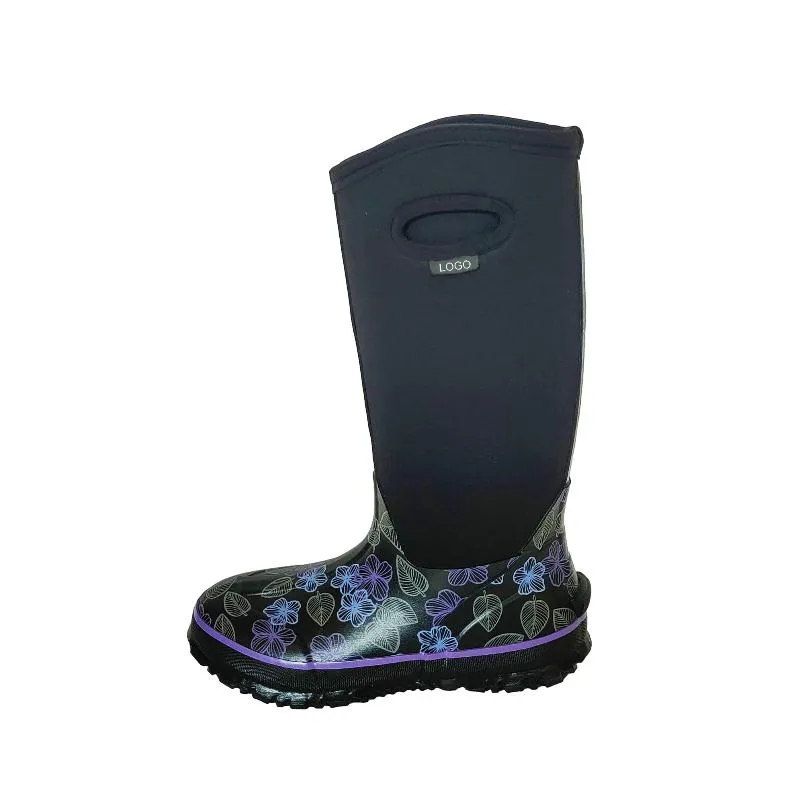The Art of Crafting Wellington Boots A Journey into Construction and Design
Wellington boots, also known as Wellies, have transcended their humble beginnings as specialized footwear for muddy fields and rainy days. Today, they are not only a practical accessory for the outdoor enthusiast but also a fashion statement that graces the runways and festival grounds alike. The construction of Wellington boots, however, is an intricate process that combines traditional craftsmanship with modern techniques, ensuring they meet the needs of today’s diverse consumers.
Historical Context
The Wellington boot originated in the early 19th century, named after the 1st Duke of Wellington, who popularized this type of footwear. Originally made from leather, these boots were designed for horseback riding and outdoor activities. Over the years, manufacturers began to explore more resilient materials, leading to the use of rubber. The first rubber Wellies were made in the 1850s and have since evolved into a versatile piece of footwear used for gardening, farming, and casual outings.
Material Selection
The construction of a Wellington boot begins with the careful selection of materials. Modern Wellies are primarily made from natural rubber due to its durability, flexibility, and waterproof properties. Manufacturers often blend natural rubber with synthetic compounds to enhance the boot's performance, ensuring it can withstand a range of conditions. Some brands are now exploring eco-friendly materials, such as recycled rubber, to appeal to environmentally conscious consumers.
Design and Molding Process
Once materials are selected, the design phase begins. This involves creating patterns and prototypes that cater to both function and style. Designers consider the intricacies of the boot's structure, ensuring it offers comfort, support, and ease of wear. The toe shape, shaft height, and tread pattern are all crucial elements that affect the boot's performance.
construction wellington boots

The next step is the molding process. Large molds are created to shape the rubber into the desired form. The rubber is heated and poured into these molds, where it is allowed to cool and solidify. This process, known as vulcanization, strengthens the rubber, making it resistant to wear and tear. After cooling, the boots are removed from the molds, trimmed, and prepared for finishing touches.
Finishing Touches
The construction of Wellington boots is not only about functionality; aesthetics play a vital role as well. After the initial molding, the boots undergo a series of finishing processes. This can include polishing, painting, and adding decorative elements, such as buckles or patterns. Some brands collaborate with artists to create limited-edition designs, turning boots into pieces of wearable art.
Quality control is another crucial stage in the construction process. Each pair of boots is meticulously examined for defects, ensuring they meet the brand's standards. This attention to detail ensures that every pair provides comfort and style, ultimately leading to customer satisfaction.
Sustainability in Production
As the demand for sustainable fashion grows, many manufacturers are re-evaluating their production methods. Some brands are adopting more sustainable practices, such as reducing waste during the manufacturing process and using renewable energy sources. Additionally, initiatives to recycle old boots and create new models from their materials are gaining momentum, appealing to a more eco-conscious consumer base.
Conclusion
The construction of Wellington boots is a fascinating blend of tradition and innovation. From the careful selection of materials to the intricate molding and finishing processes, every step is essential to create footwear that is both functional and stylish. As the landscape of fashion continues to evolve, the Wellington boot stands as a testament to durability, versatility, and creative design. Whether worn for practical purposes or as a fashion accessory, these boots will continue to make a splash in both muddy fields and urban markets for years to come.
-
Stay Dry in Any Condition with WadersNewsJul.17,2025
-
Elite Performance with Camouflage Combat BootsNewsJul.17,2025
-
Dry and Comfortable with Green Rubber Garden ShoesNewsJul.17,2025
-
Convenient Protection with Foldable RainbootsNewsJul.17,2025
-
Comfort and Protection with Neoprene Work BootsNewsJul.17,2025
-
Brighten Rainy Days with Floral Rain BootsNewsJul.17,2025
-
Safety Wellies: The Ultimate Combination of Protection, Comfort, and VisibilityNewsJun.19,2025











